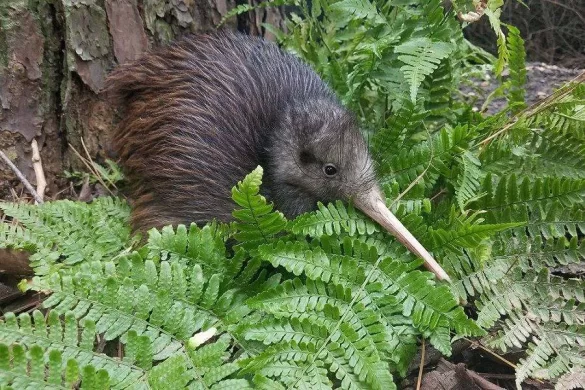In the realm of avian diversity, the kiwi bird stands as a truly remarkable creature. Endemic to the islands of New Zealand, these flightless birds possess distinctive characteristics that set them apart from their counterparts around the world. From their distinctive appearance to their intriguing behaviors, kiwi birds have captivated the attention and interest of both scientists and nature enthusiasts. In this article, we will delve into the captivating world of kiwi birds, exploring their physical attributes, habitat, behavior, and conservation efforts.
Physical Characteristics:
The kiwi bird is a small, chicken-sized flightless bird that belongs to the Apterygidae family. While there are five species of kiwi birds—namely, the North Island brown kiwi, the great spotted kiwi, the little spotted kiwi, the Okarito kiwi, and the rowi—there are some shared physical traits among them. Kiwis possess a round body, tiny wings that are almost non-existent, and a long, slender bill that measures up to one-third the length of their body.
One of the most distinctive features of kiwi birds is their plumage. Covered in coarse, hair-like feathers, their appearance more closely resembles fur than typical feathers. These feathers are usually a mix of shades, ranging from dark brown to lighter tones, providing excellent camouflage in their natural habitat. Additionally, kiwis possess strong muscular legs and large feet, armed with sharp claws that aid in their terrestrial locomotion and digging abilities.
Habitat and Distribution:
Kiwi birds are exclusively native to New Zealand, and each species occupies specific regions of the country. Their natural habitats include dense forests, scrublands, grasslands, and occasionally, subalpine regions. Each species of kiwi bird has its preferred habitat, ranging from coastal areas to high-altitude forests.
Behavior and Adaptations:
Being flightless, kiwi birds have evolved various adaptations to thrive in their unique environment. Their most remarkable adaptation is their keen sense of smell, which they rely on to locate food. Kiwis have nostrils at the end of their long bills, allowing them to probe the ground for invertebrates, worms, spiders, and other small creatures. Their diet primarily consists of insects, worms, seeds, and occasionally, fruit.
Another notable aspect of kiwi behavior is their nocturnal lifestyle. These birds are primarily active during the night, spending their days in burrows or dense vegetation to avoid predators and maintain their body temperature. Their long bills and whisker-like feathers aid them in foraging in the dark, where their exceptional sense of smell becomes particularly useful.
Conservation Efforts:
Kiwi birds are considered a national symbol of New Zealand and hold cultural significance to the indigenous Māori people. Despite their cultural importance, kiwi populations have faced significant challenges, including habitat loss, predation by introduced species such as stoats and cats, and other threats.
In response, New Zealand has undertaken extensive conservation efforts to protect and restore kiwi populations. These efforts involve predator control programs, habitat restoration projects, and captive breeding programs. Many organizations and individuals are actively involved in protecting kiwi birds and their habitats, working together to ensure the long-term survival of these unique avian species.
Conclusion:
The kiwi bird, with its distinctive appearance and intriguing behaviors, holds a special place in the hearts of New Zealanders and nature enthusiasts worldwide. Adapting to a flightless lifestyle and displaying unique sensory traits, these birds have evolved to thrive in the unique environments of New Zealand’s forests and grasslands. However, the ongoing conservation efforts remain crucial to safeguarding kiwi populations for future generations to appreciate and enjoy the charm of these captivating creatures.


 Facebook
Facebook  Instagram
Instagram  Youtube
Youtube 